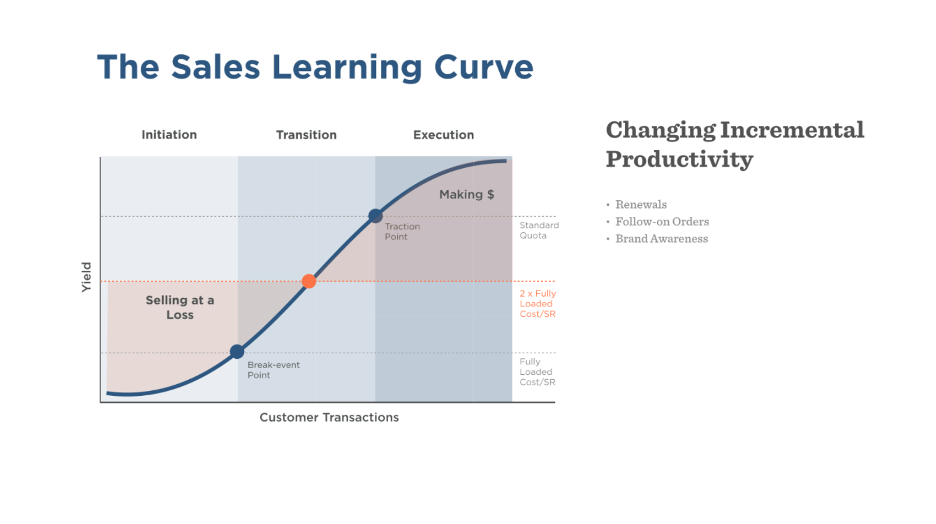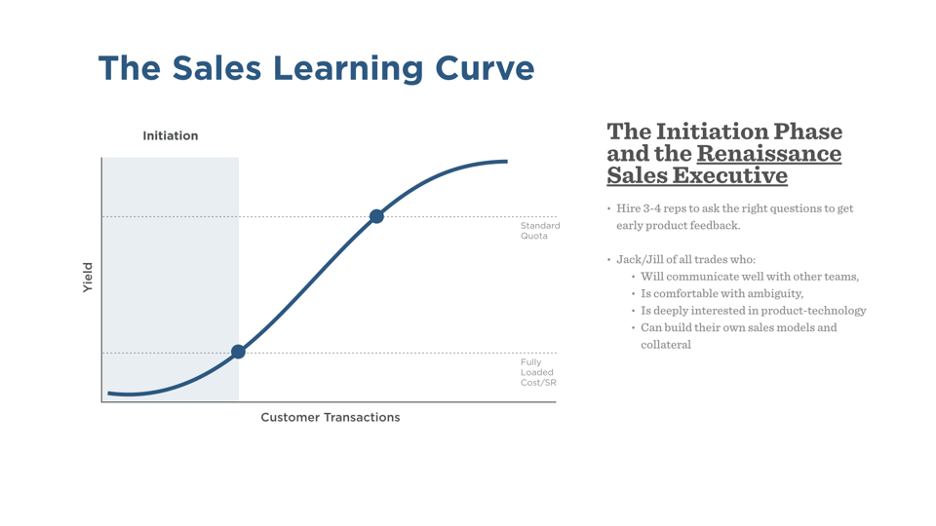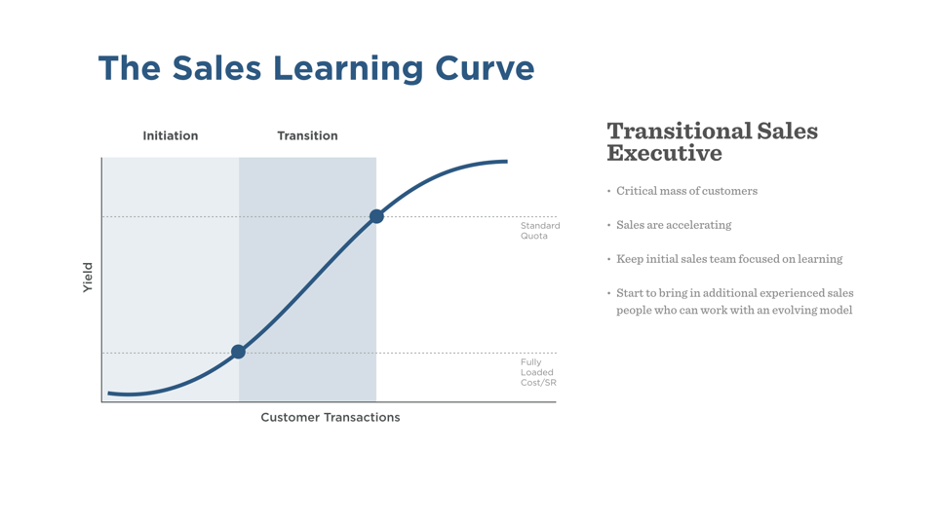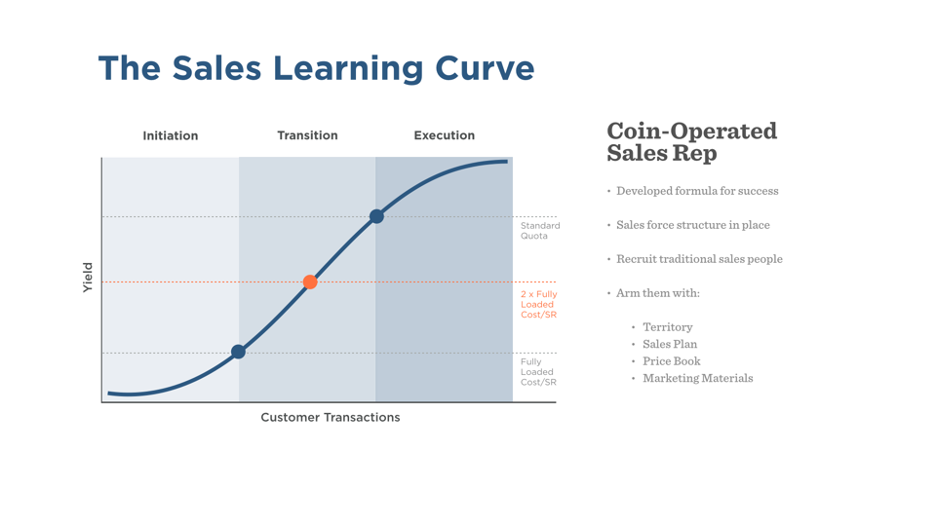In my many conversations over the years with founders of software companies from pre-revenue through seed to Series C, as well as my personal experience building and leading sales teams, I have learned that we eventually have to face the challenge of building out a high performing sales team and process.
There is definitely a temptation to jump right in and build a multi-step structured sales process based on what worked at our last endeavor. We might hire inside and outside sales reps, set aspirational quotas, and begin dumping leads into the top of the funnel.
And then the frustration starts to kick-in. Early results rarely meet initial expectations – the target number of deals are not closing, the average contract value is falling short, the length of time from lead to closed-won is widely variable (and taking longer than planned for).
What do we do? Maybe the founder leads a few sales efforts successfully and says, “See – just do it like that.” Or leadership believes they hired the wrong people (which may actually be right, but not for the reasons they think – more on that coming up). Or they start to add more steps to the process, or institute activity-based tracking/measurement/quotas to supplement the outcome-based goals – “Sales reps should make 20 calls to new prospects per day.” And still, results are not matching expectations.
So, what’s happening?
There may be several elements at play here – one is whether your sales awareness (and thus, approach) is aligned with your product / market awareness. I’ll tackle that in another post on the “Five Levels of Awareness”.
What I commonly see, though, is not understanding the Sales Learning Curve, not hiring Renaissance Sales Executives, and trying to jump to coin-operated sales.
The Sales Learning Curve
I first learned about The Sales Learning Curve when I was building my first direct sales team. I had been successful as a sales rep myself and being asked to build and lead a team at a rapidly growing SaaS startup. I had previously been a student of The New Solution Selling process used by Microsoft and my company at the time, a Microsoft partner, so I understood consultative selling.
My research led me to a Harvard Business Review article, The Sales Learning Curve, published in 2006 by Mark Leslie and Charles A. Holloway. Amazingly, that article is still available and I highly recommend reading it in full.
Mark Leslie would write an update in 2016 for Sequoia Captial, also titled The Sales Learning Curve. It has better graphics / illustrations than the original article, but I recommend still reading the original text, as well.
My aim here is not to repeat or summarize what’s in those articles – they are great reads with numerous insights that will stay with you for the rest of your professional career.
I do want to talk about the Renaissance Sales Executive and to understand that I want to share Leslie’s overall slide showing the SLC (see below). Note there are three stages, and the staffing and financial resources are different for each: Initiation, Transition, and Execution. Note that you shift from one stage to the next at key inflection points – Break-even and Traction.

Image Credit: Mark Leslie, The Sales Learning Curve, Sequoia Capital Article, July 12, 2016
The Renaissance Sales Executive
One of the strongest takeaways for me has always been that your sales approach is a journey and the type of salespeople (and process) your organization needs will change as you learn more about what works.
Success in those early stages (what Leslie calls “The Initiation Phase”) requires the Renaissance Sales Executive.

Images Credit: Mark Leslie, The Sales Learning Curve, Sequoia Capital Article, July 12, 2016
As you reach the Break-Even Point, you’ll want to expand to include Transition Sales Reps, and eventually to Coin-Operated Sales Reps.


From Leslie’s Sequoia article:
“Lastly, the execution phase. You’ve reached Nirvana! This is where you have ‘pedal to the metal’ staffing…. These are coin-operated reps – people who just get out there and sell. Nice and simple.”
– Mark Leslie, The Sales Learning Curve, Sequoia Capital Article, July 12, 2016
Note that the temptation for many founders and leadership teams is to solve for the execution phase yet doing it before you’re ready will lead to expensive lessons, frustration, and missed opportunities.

